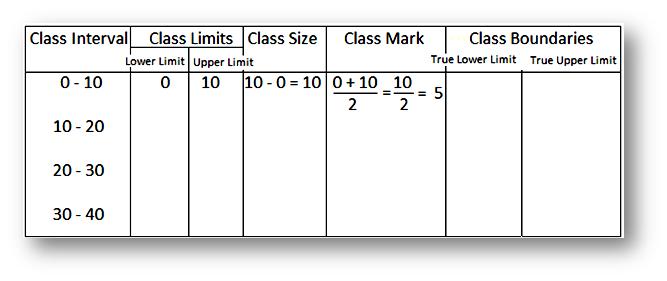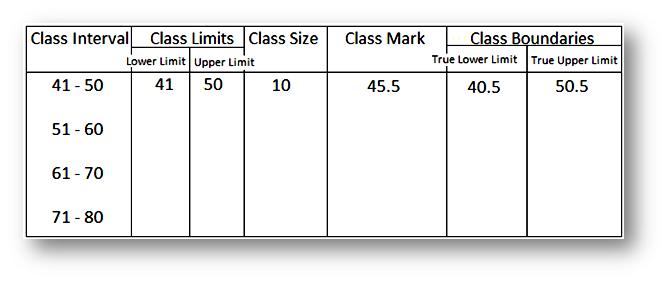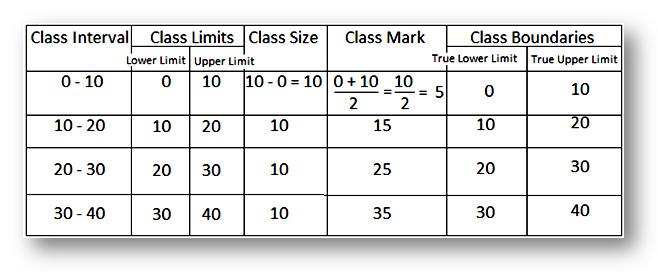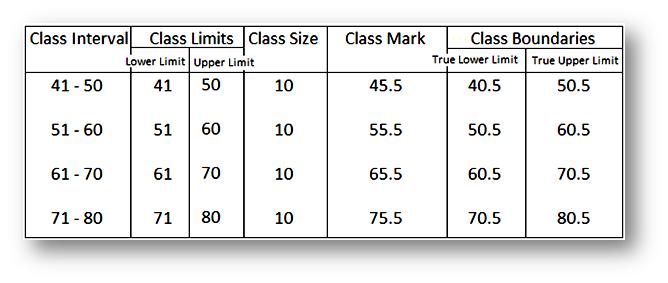Subscribe to our ▶️ YouTube channel 🔴 for the latest videos, updates, and tips.
Worksheet on Frequency Distribution
In worksheet on frequency distribution the questions are based on arranging data in ascending order or descending order and constructing the frequency distribution table.
1. Arrange the following data in ascending order.
(a) 7, 2, 10, 14, 0, 6, 15, 24, 8, 3
(b) 4.6, 8.1, 2.0, 3.5, 0.7, 9.3, 1.4, 0.8
2. Arrange the following data in descending order.
(a) 14, 2, 0, 10, 6, 1, 22, 13, 28, 4, 8, 16
(b) 1.2, 3.5, 0.1, 0.3, 2.4, 8.6, 5.0, 3.7, 0.7, 0.9
3. Construct the
frequency table for each of the following.
(a) 4, 3, 6, 5, 2, 4, 3, 3, 6, 4, 2, 3, 2, 2, 3, 3, 4, 5, 6, 4, 2, 3, 4
(b) 6, 7, 5, 4, 5, 6, 6, 8, 7, 9, 6, 5, 6, 7, 7, 8, 9, 4, 6, 7, 6, 5
4. The marks obtained out of 25 by 30 students of a class in the examination are given below.
20, 6, 23, 19, 9, 14, 15, 3, 1, 12, 10, 20, 13, 3, 17, 10, 11, 6, 21, 9, 6, 10, 9, 4, 5, 1, 5, 11, 7, 24
Represent the above data as a grouped data taking the class interval 0 - 5
5. Complete the table given below.
(a)

(b)

6. Weekly pocket expenses (in $) of 30 students of class VIII are 37, 41, 39, 34, 71, 26, 56, 61, 58, 79, 83, 72, 64, 39, 75, 39, 37, 59, 57, 37, 53, 38, 49, 45, 70, 82, 44, 37, 79, 76.
Construct the grouped frequency table with the class interval of equal width such as 30 - 35. Also, find the range of the weekly pocket expenses.
7. Pulse rate (per minute) of 25 persons were recorded as
61, 75, 71, 72, 70, 65, 77, 72, 67, 80, 77, 62, 71, 74, 79, 67, 80, 77, 62, 71, 74, 61, 70, 80, 72, 59, 78, 71, 72.
Construct a frequency table expressing the data in the inclusive form taking the class interval 61-65 of equal width. Now, convert this data again into the exclusive form in the separate table.
8. The frequency distribution of weights (in kg) of 40 persons is given below.
| Weights (in kg) | 30 - 35 | 35 - 40 | 40 - 45 | 45 - 50 | 50 - 55 |
| Frequency | 6 | 13 | 14 | 4 | 3 |
(a) What is the lower limit of fourth class interval?
(b) What is the class size of each class interval?
(c ) Which class interval has the highest frequency?
(d) Find the class marks of all the class intervals?
9. Construct the frequency distribution table for the data on heights (cm) of 20 boys using the class intervals 130 - 135, 135 - 140 and so on. The heights of the boys in cm are: 140, 138, 133, 148, 160, 153, 131, 146, 134, 136, 149, 141, 155, 149, 165, 142, 144, 147, 138, 139. Also, find the range of heights of the boys.
10. Construct a frequency distribution table for the following weights (in gm) of 30 oranges using the equal class intervals, one of them is 40-45 (45 not included). The weights are: 31, 41, 46, 33, 44, 51, 56, 63, 71, 71, 62, 63, 54, 53, 51, 43, 36, 38, 54, 56, 66, 71, 74, 75, 46, 47, 59, 60, 61, 63.
(a) What is the class mark of the class intervals 50-55?
(b) What is the range of the above weights?
(c) How many class intervals are there?
(d) Which class interval has the lowest frequency?
Answers for worksheet on frequency distribution are given below to check the exact answers of the above questions on presentation data.
Answers:
1. (a) 0, 2, 3, 6, 7, 8, 10, 14, 15, 24
(b) 0.7, 0.8, 1.4, 2.0, 3.5, 4.6, 8.1, 9.3
2. (a) 28, 22, 16, 14, 13, 10, 8, 6, 4, 2, 0, 1
(b) 8.6, 5.0, 3.7, 3.5, 2.4, 1.2, 0.9, 0.7, 0.3, 0.1
3. (a)
| X | 2 | 3 | 4 | 5 | 6 |
| Y | 5 | 7 | 6 | 2 | 3 |
(b)
| X | 4 | 5 | 6 | 7 | 8 | 9 |
| f | 2 | 4 | 7 | 5 | 2 | 2 |
4.
| C.I. | 0 - 5 | 5 - 10 | 10 - 15 | 15 - 20 | 20 - 25 |
| Frequency | 5 | 9 | 8 | 3 | 5 |
5.

(b)

6.
| C.I. | 25-30 | 30-35 | 35-40 | 40-45 | 45-50 | 50-55 | 55-60 | 60-65 | 65-70 | 70-75 | 75-80 | 80-85 |
| Frequency | 1 | 1 | 8 | 2 | 2 | 1 | 4 | 2 | 0 | 3 | 4 | 2 |
Range = $ 57
7. Inclusive form
| C.I. | 56 - 60 | 61 - 65 | 66 - 70 | 71 - 75 | 76 - 80 |
| Frequency | 1 | 4 | 4 | 10 | 6 |
Exclusive form
| C.I. | 55 - 60 | 60 - 65 | 65 - 70 | 70 - 75 | 75 - 80 | 80 - 85 |
| Frequency | 1 | 3 | 3 | 11 | 5 | 2 |
8. (a) 45
(b) 5
(c) 40 - 45
(d) 32.5, 37.5, 42.5, 47.5, 52.5
9.
| C.I. | 130-135 | 135-140 | 140-145 | 145-150 | 150-155 | 155-160 | 160-165 | 165-170 |
| Frequency | 3 | 4 | 4 | 5 | 1 | 1 | 1 | 1 |
Range = 34 cm
10.
| C.I. | 30-35 | 35-40 | 40-45 | 45-50 | 50-55 | 55-60 | 60-65 | 65-70 | 70-75 | 75-80 |
| Frequency | 2 | 2 | 3 | 3 | 5 | 3 | 6 | 1 | 4 | 1 |
(a) 52.5
(b) 44 gm
(c) 10
(d) 65 - 70, 75 - 80
● Statistics - Worksheets
- Worksheet on Frequency Distribution
- Worksheet on Mean Median and Mode
- Worksheet on Bar Graph
- Worksheet on Pie Graph
- Worksheet on Line Graph
From Worksheet on Frequency Distribution to HOME PAGE
Didn't find what you were looking for? Or want to know more information about Math Only Math. Use this Google Search to find what you need.


New! Comments
Have your say about what you just read! Leave me a comment in the box below. Ask a Question or Answer a Question.